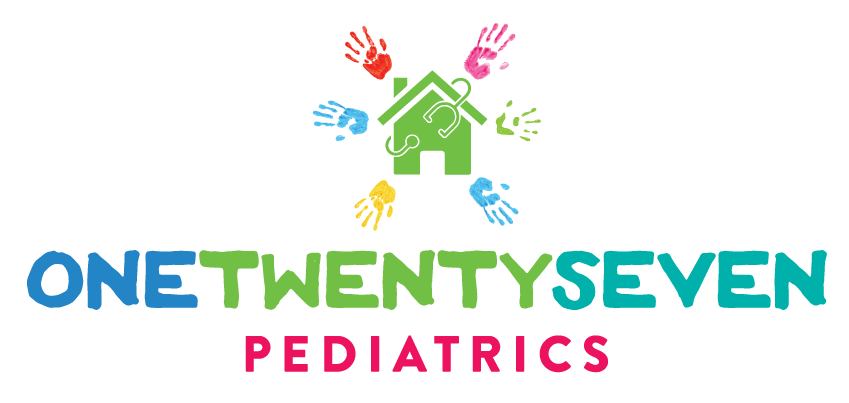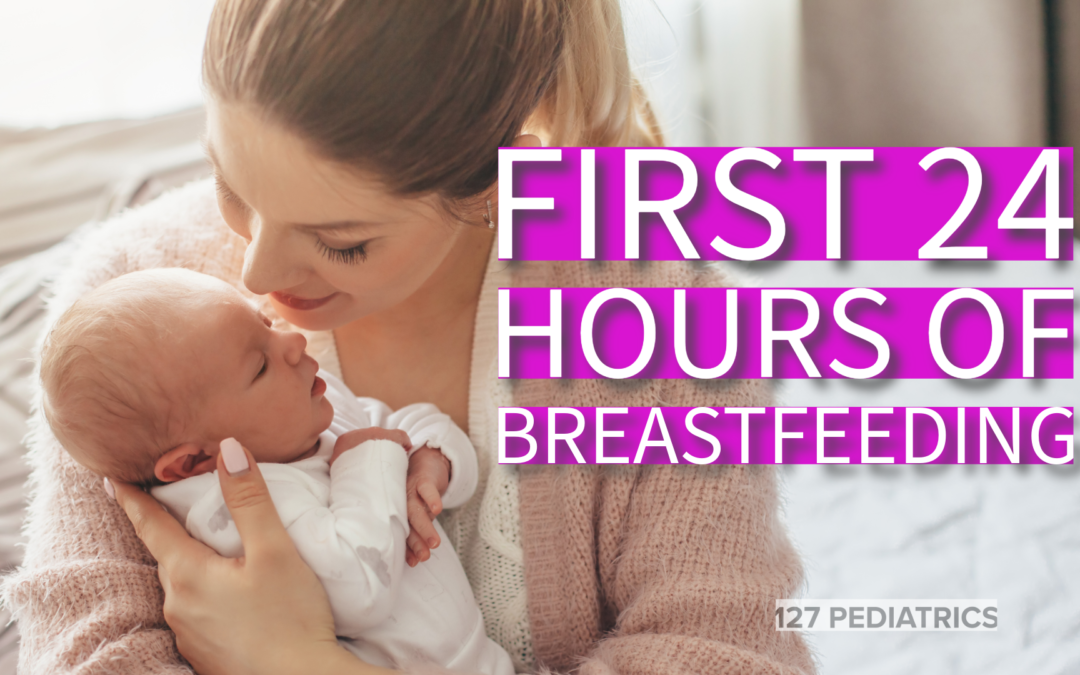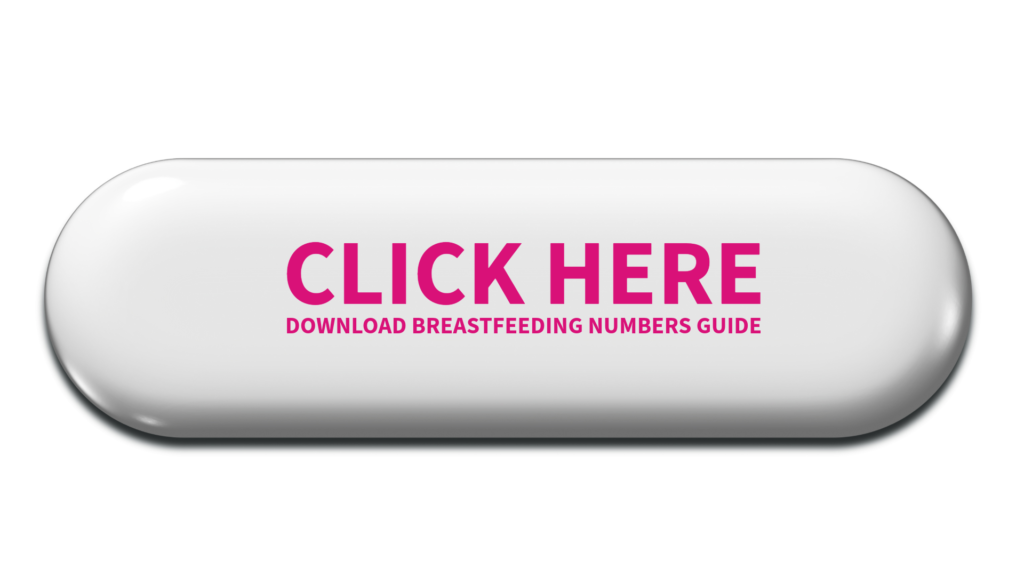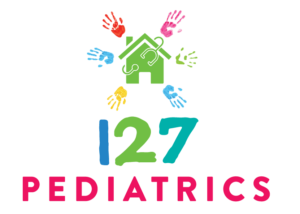As a breastfeeding expert, I can tell you that the first 24 hours of breastfeeding are extremely important in your journey towards exclusive breastfeeding.
In my former life as a newborn hospital pediatrician, I had the privilege to care for newborns during the first two days of their life. Part of my job at the time was to help new mothers to breastfeed their babies. Often, a new mom would come to the hospital, go through labor and delivery and then be transferred to the postpartum floor. There, she would look up at me with exhaustion in her eyes and ask me to show her how to breastfeed.
Unfortunately, it is much more difficult to learn how to breastfeed in the “heat of the moment.” While breastfeeding seems natural and like it should be easy, that is far from the truth. Even as a pediatrician, I struggled to breastfeed my own baby.
One of the keys to success is to prepare for breastfeeding ahead of time. Which is why I am so glad that you are here. Hopefully, you are reading this article in order to prepare yourself for the breastfeeding journey that lies ahead.
After you read this article, be sure to get on my email list so that you can keep filling your brain with breastfeeding knowledge so that you can rock breastfeeding.
For now, let’s look at what to expect in the first 24 hours and how to start breastfeeding off on the right foot.
Skin to Skin Contact
During the first hour of life, your healthy naked baby should be placed on your bare chest. This is a magical time of bonding and regulation for both you and the baby. All of the “feel good” and bonding hormones will flow through your body as well as your baby during this golden hour.
These hormones and quiet stillness will help your baby to regulate their body temperature, blood sugar, and respiratory rate. This position also gives you a bird’s eye view to be able to note early hunger cues. Newborn infants who are held skin to skin contact with their mothers will often go to the breast more easily and feed for longer periods of time.
Early skin to skin contact is the first step towards accomplishing your goal of exclusive breastfeeding. You can continue this type of contact even several hours after birth.
Let a sleeping baby sleep, or should you?
After the initial feeding, your new baby will often go into a very deep sleep. While every baby is different, I advise you to do your best to offer frequent feedings to your baby even if they are sleepy. Some breastfed babies are so sleepy during this time that not even a freight train driving through your hospital room would rattle them.
If this is true of your baby, you can hand express breast milk into a plastic teaspoon and offer it to your baby every few hours. The most important thing to do during these 24 hours is to make consistent steps towards establishing a supply of breast milk. This means that you need to stimulate your breasts every few hours while also ensuring that your baby is fed.
Your milk flow will not be massive during this time and feeding behavior will vary from baby to baby, but you should make consistent steps towards establishing your milk supply.
Positioning your baby
There are many different ways that you can hold your baby for breastfeeding. In the early days after birth, you will be in a hospital bed or at home in your own bed. During these early days of frequent feedings and haphazard feeding schedules, the laid back or side lying position may be the most comfortable for you.
The most important thing to remember about positioning is to do your best to bring the baby to you instead of your body to the baby. While some babies rebel against this, your own body will thank you if you are consistent with this routine.
Rooming in
Sharing a room with newborn babies around the clock in the early hours and days after delivery will go a long way to helping you to establish a good mature milk supply. While hormones dictate how much milk you will produce in the first 10 days of life, frequent feedings during these days will lead to better long term success.
When you are rooming in with your baby, you will be able to catch early feeding cues rather than waiting for the late signs of hunger such as crying.
Certain hospitals require rooming-in as part of the baby friendly initiative. Additionally, all healthcare professionals should be trained in the clinical guidelines of breastfeeding as part of this initiative.
Hand Expression
Learning how to use your own hands to express your breast milk is an invaluable skill. In the early days postpartum, using a breast pump to extract milk is counterproductive and often frustrating. Early on, your breasts will produce about a teaspoon of a sticky yellow substance known as colostrum. You can remove this milk with the use of your hands and express it into a teaspoon for your baby to consume.
Additionally, hand expression is a valuable skill even after several months of life. In cases where you might forget your pump or you are feeling engorged or overly full, hand expression is a great way to remove mature milk as well as colostrum.
Feed frequently
Frequent feedings are the name of the game in the early days postpartum. While your baby will most likely be sleepy in the first 24 hours, the following 24 hours and beyond your baby will be awake and ravenous. Newborn infants have a very small stomach and require small and frequent feedings. Most healthcare providers recommend feedings your newborn infant at least 8-12 times per day during the first few weeks of life.
Subsequently, healthy term babies will fall into a more regular feeding pattern. They may have short periods of time where they will feed more frequently due to a growth spurt, but will not feed as often as they do in the early days of breastfeeding.
Count the diapers
One way to know if your baby is getting enough breast milk is to count the number of wet diapers that your baby has. In the early hours after birth, wet and dirty diapers could be the result of fluid shifts that occur in your baby’s body after delivery. But for the most part, counting diapers will help you to know if you are on track with feedings.
In the early days, your baby should have one wet diaper for each day old until about day four postpartum. After the 4th day, your milk should start to come in and your baby should have at least 5 wet diapers per day.
On the other hand, poopy diapers are a little bit different. Initially, your baby’s poop will be black and sticky. This substance is called meconium and this type of poop lasts for the first couple of days. After that, the baby’s stool should change to a green color. Finally, by the 4th day of life, your breastfeeding baby should have loose yellow stools with small white specks in it.
Just Say No to Bottles and Pacifiers
While this is not a hard and fast rule, for the most part, it is best to avoid bottles and pacifiers in the early days of life. Ideally, you would wait until your breastfeeding relationship is well established. This has less to do with “nipple confusion” and more to do with how easy it is to stick a pacifier in your baby’s mouth instead of feeding them.
Healthy babies require 8-12 breastfeeding sessions per day in order to gain weight and establish a good milk supply for mom. Bottles and pacifiers can interfere with that if they are used in place of feedings. If you need to supplement your baby, a bottle may be necessary. However, if you are direct nursing and the baby is doing well, avoid the bottle until much later.
Limit Visitors
Friends and family are such a blessing to have in our lives. However, right after giving birth and while trying to establish breastfeeding, they can be an extra source of exhaustion. While you are in the hospital, do your best to limit the number of people in the room with you. If your goal is to establish exclusive breastfeeding, you need to save your energy for breastfeeding your baby and resting.
If you are having difficulty communicating with your family, you can ask the baby nurses for assistance. They can easily put a sign on your hospital room door that indicates no visitors. Based on my experience as a newborn hospital pediatrician, infants who had uninterrupted and peaceful postpartum stays tended to have more successful breastfeeding.
Ask for Help
Many hospitals have lactation consultants available. You can inquire with your postpartum or baby nurse about scheduling a visit with them. Even if you are not having problems, it is always a good idea for a healthcare professional to observe you latching the baby. If the lactation consultant is not available, often the mother/baby nurse will have experience with helping new moms with breastfeeding.
Additionally, be sure to know what lactation resources are available to you once you leave the hospital.
Know what to expect
Colostrum is the initial breast milk produced by your body, which is a dense, yellow, and adhesive fluid that will be produced in limited amounts within the first day after giving birth. This valuable substance serves as the ideal nourishment for your newborn while also providing a remarkable enhancement for their immune system.
Newborns typically lose weight in their first week of life. The amount of weight they lose varies and is influenced by various factors, such as the type of delivery and the duration of labor. Additionally, how well the baby is feeding also affects weight loss. However, we anticipate that by the second week, babies will regain their birth weight. weight.
After giving birth, your nipples may be sensitive. It is normal to feel this way because of hormones and if you are a first-time breastfeeding mother. However, if you experience severe nipple pain, bruising, bleeding, or scabbing, it may indicate that your baby’s latch is not correct. Painful nipples can impact your milk production, so it is important to seek assistance for this issue.
In addition, you may experience uterine cramping while breastfeeding. The intensity of these cramps can vary. This is because of the hormone oxytocin, which is responsible for milk letdown and uterine contractions. Despite the discomfort, exclusively breastfeeding during the first few weeks after delivery promotes healing and recovery.
Lastly, breastfeeding mothers often experience night sweats. This can be unexpected for new mothers. Hormones play a role in causing night sweats during breastfeeding. Estrogen levels decrease after pregnancy, resulting in a menopause-like state and night sweats. However, these symptoms will get better with time.
How Can 127 Pediatrics Help You?
At 127 Pediatrics, we offer in-home pediatric and lactation care as well as online breastfeeding education and coaching. If you are local to the Colleyville area, visit our website to find out more about our in-person options. If you are outside of the area, be sure to take advantage of our free resources. You can start by subscribing to our YouTube Channel.
© 127 Pediatrics, February 2024
This article is for information purposes only. Please consult your child’s pediatrician for medical advice.

Dr. Andrea Wadley is a board certified pediatrician and is also board certified in breastfeeding medicine. She opened 127 Pediatrics in July 2018 to offer high quality and evidence based pediatric and lactation care.




